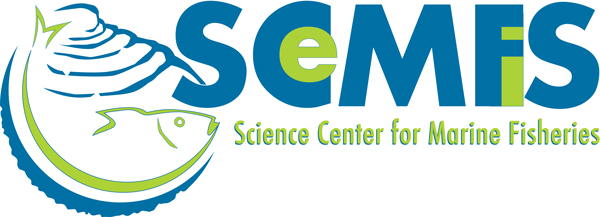June 25, 2024 — A collaborative effort between The University of Southern Mississippi (USM) and the Science Center for Marine Fisheries (SCEMFIS) provides significant research opportunities that benefit the Mississippi Gulf Coast’s blue economy. Student internships represent one reward from the impactful partnership.
Molly Spencer and Catherine Wilhelm – USM graduate students in the School of Ocean Science and Engineering (SOSE) – were paired with the National Science Foundation (NSF) Internship Program that prepares the next generation of fisheries scientists in response to climate change, the blue economy, and coastal impacts.
Spencer’s research work with the program focused on the effects of climate-inducing warming on commercial imports such as Atlantic surfclam and ocean quahog in the Mid-Atlantic Bight. Analyzing the effects of increasing temperatures on habitats has sparked her passion for fisheries at the Northeast Fisheries Science Center (NEFSC) in Woods Hole, Mass.
“The internship with NEFSC gave me a greater sense of just how important it is for scientists and industry partners to work together,” Spencer said. “Lots of changes are occurring in our oceans right now, and I’m fortunate to have had the opportunity to participate in research that was both scientifically rewarding as well as impactful to the coastal community.”
Read the full article at the University of Southern Mississippi

